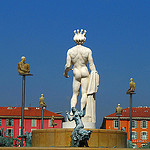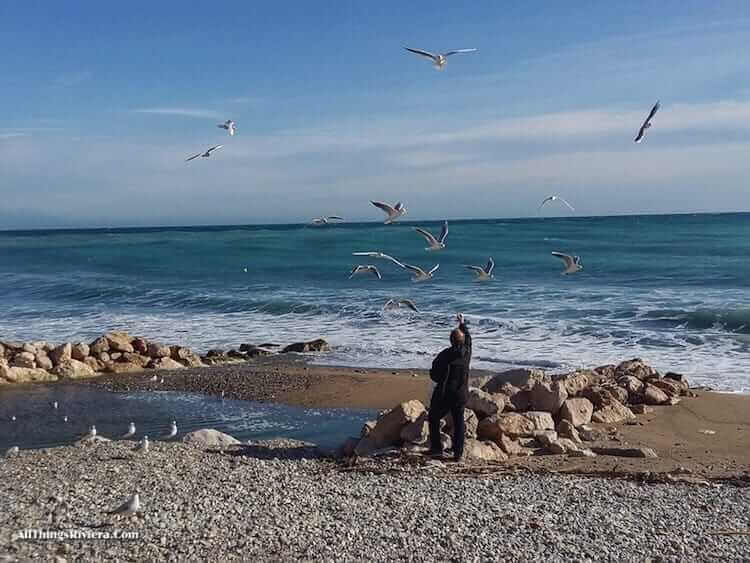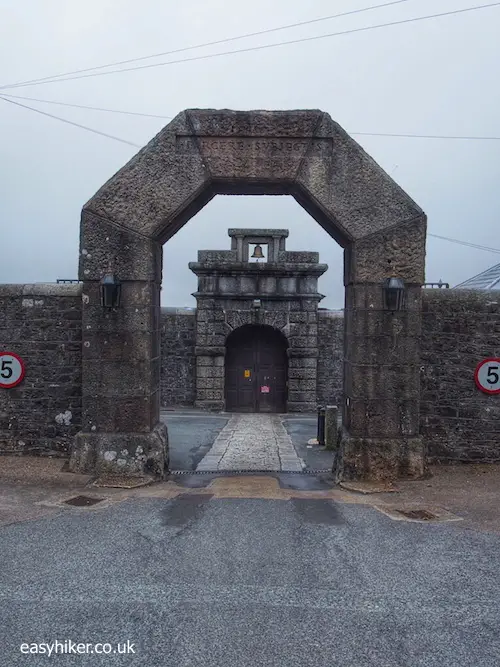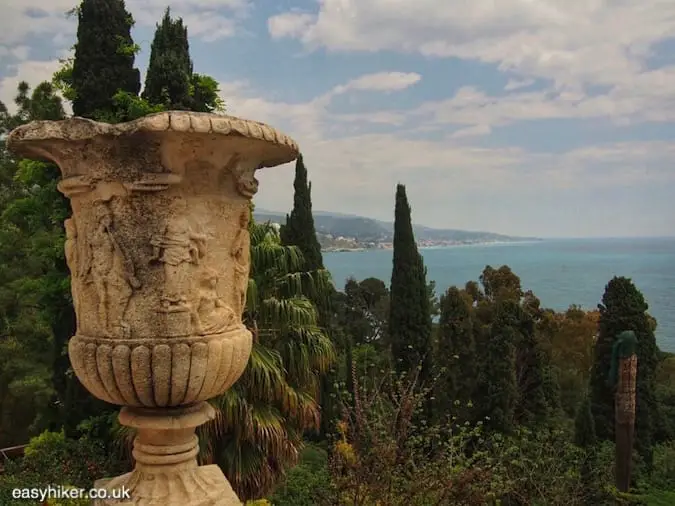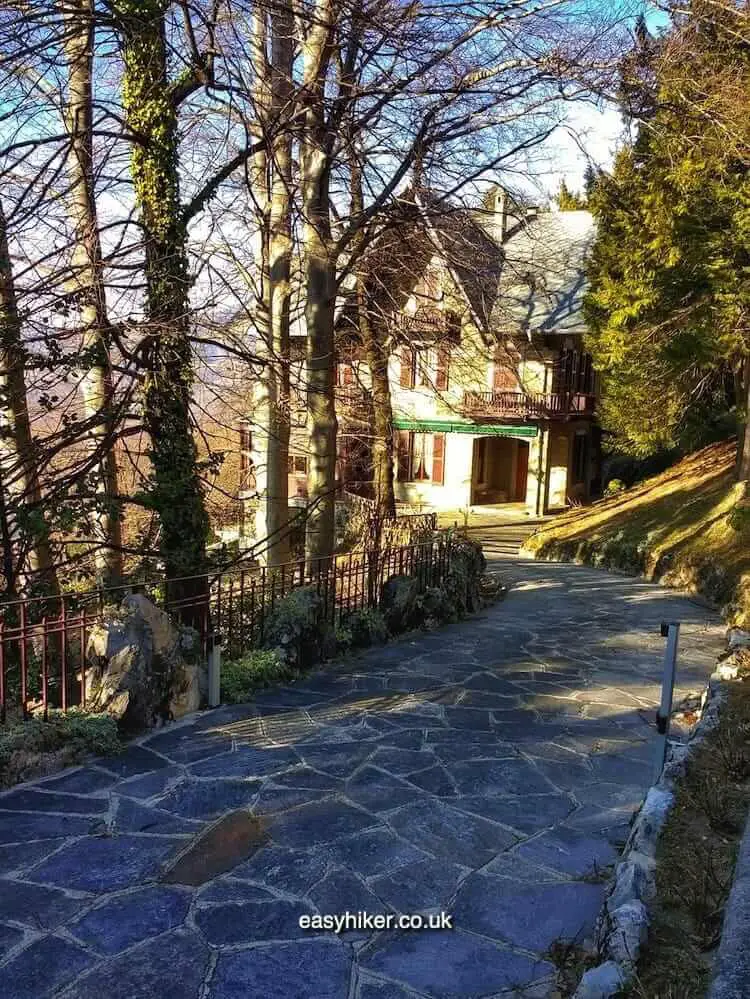The charms of Southern Piemonte – as we saw last week – may be rich and many, but a beautiful landscape is not one of them.
Most of Southern Piemonte consists of flat, endless fields, so your best bet for a day trip is a town walk.
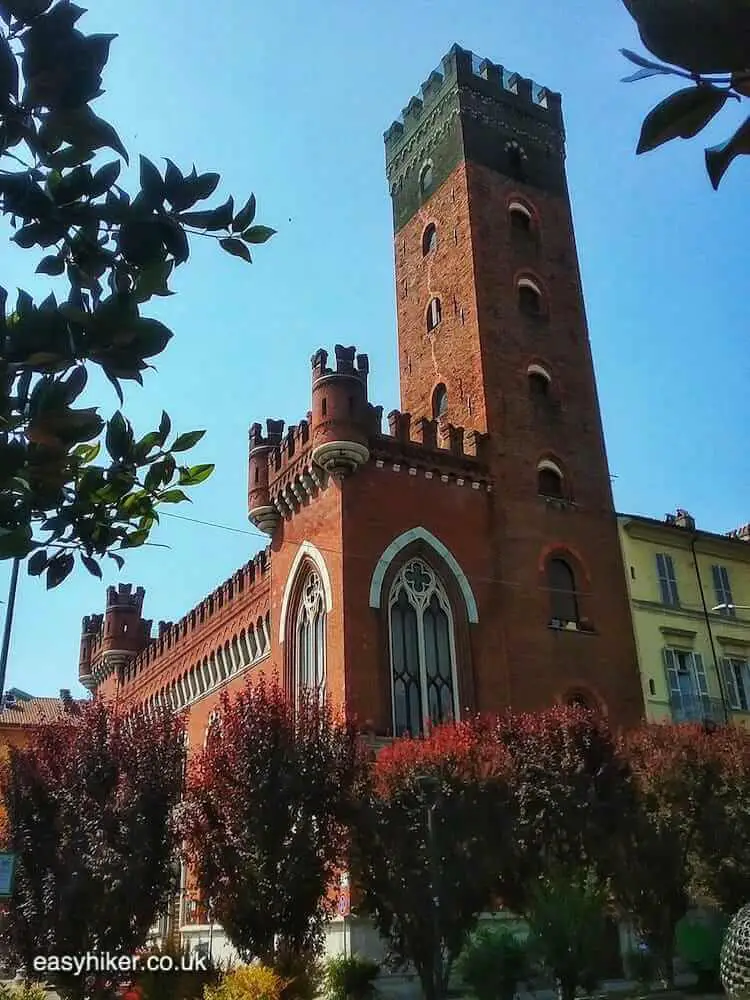
The historically most interesting town in the area is Asti, an important centre of trade and politics throughout antiquity and the Middle Ages.
The Romans first settled here during their “unification of Italy” in the 2nd century BC, gradually extending a military outpost into a thriving city throughout the following centuries.
Just before the fall of the Empire, Asti even became – albeit briefly – its quasi-capital when the Emperor Honorius sought refuge here from Barbarian invaders.
Leftovers from the ancient Roman fortifications are scattered all over town, and some sections of the old city wall were only re-discovered a few decades ago during building works in the historic centre.
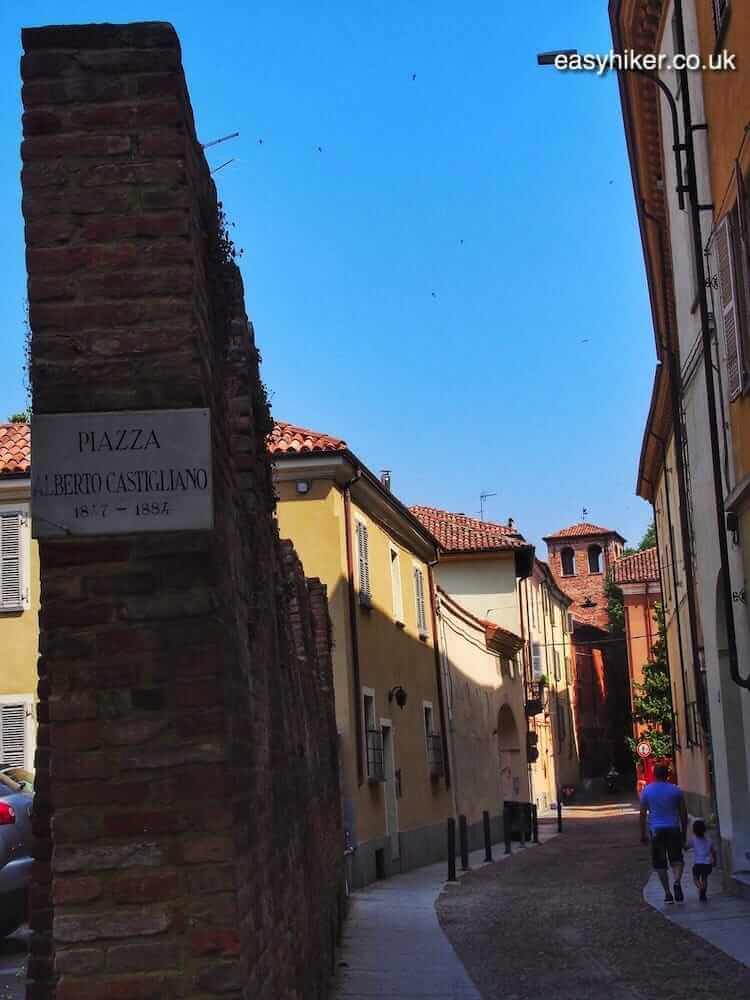
Asti is not only the region’s most ancient town, but also its most famous name. It’s a fair guess that few of you will have visited Asti, but many will have drunk from its fountain, so to speak, which has carried the town’s name all over the world.
But while Asti Spumante may be the region’s best-known wine, it is not necessarily its best and at an alcohol content of less than 10% probably best left for birthday parties of teenage girls.
Discovering the Asti beyond Spumante
One more thing for which Asti is famous is its Palio, an annual medieval festival that culminates in a horse race where the town’s various wards compete for honours.
Many Italian towns celebrate such a Palio, and while the medieval festival in Siena is undoubtedly the one which attracts most international intention, the one in Asti is older and (although this is disputed) probably Italy’s oldest.
Even in the early summer (the festival itself is celebrated in September), the downtown colonnades are decorated in the colours of the various quarters, …
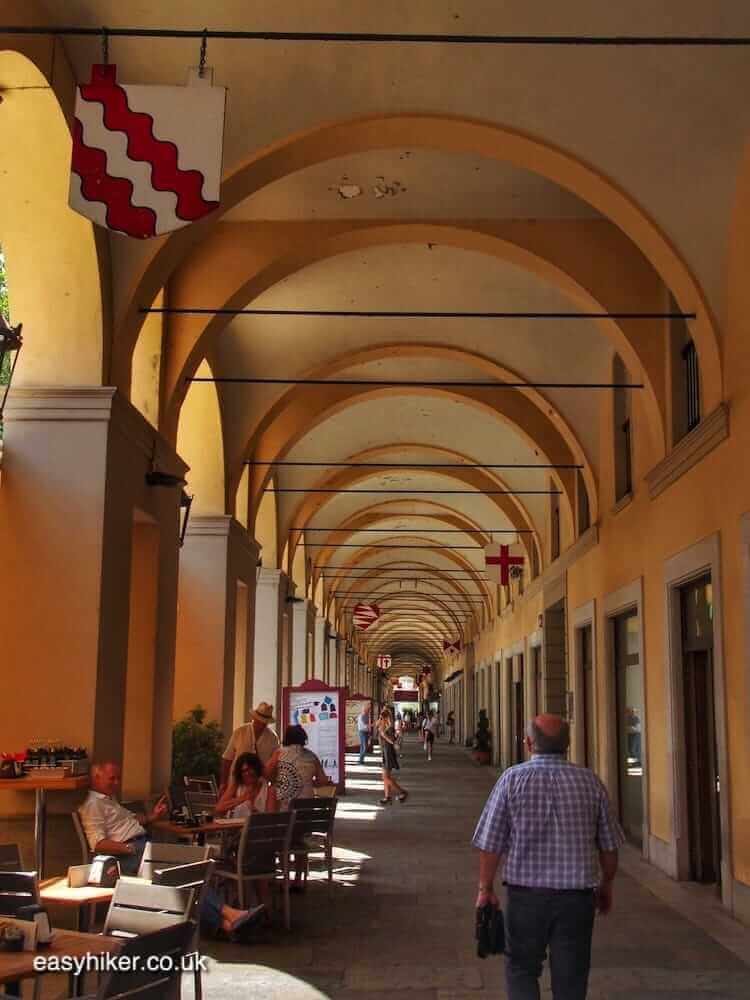
… and the city even has a dedicated museum to honour the Palio’s long history.
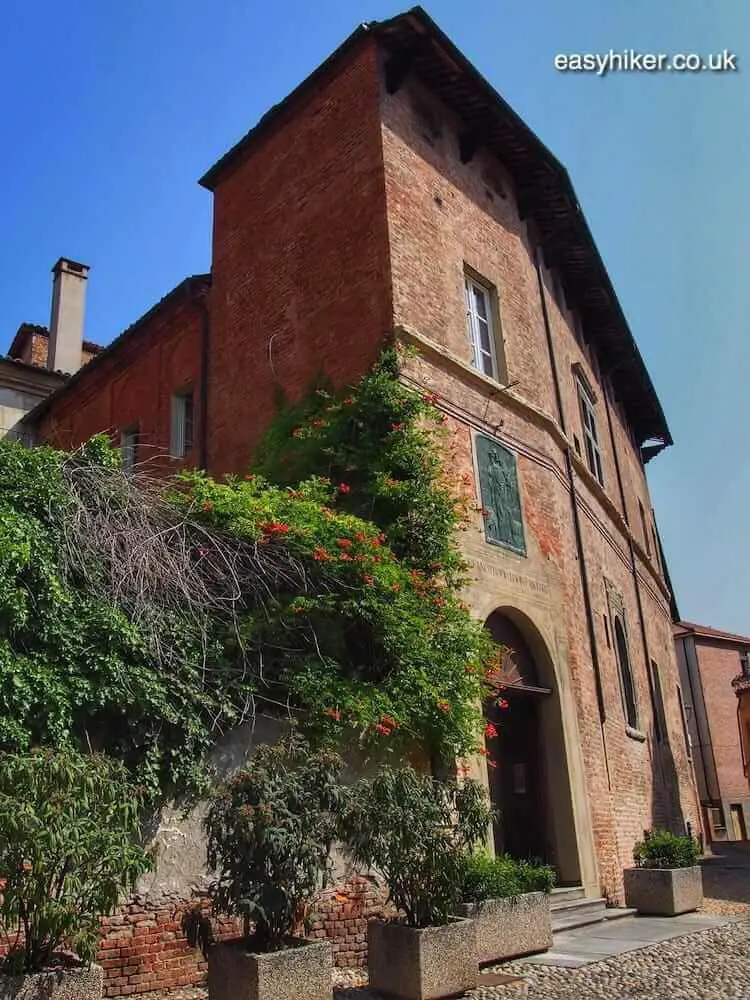
What the city does not have, however (in stark contrast to Siena), is a scenic arena for the event. For the last 30 years or so, the race has been staged on the Piazza Alfieri, which serves as the town’s central car park for most of the year.
It is here, however, where you can make the acquaintance of Asti’s second claim to cultural fame: Vittorio Alfieri, who was born here and whose statue graces the square which has been named after him, is probably the most famous Italian writer of whom you have never heard.
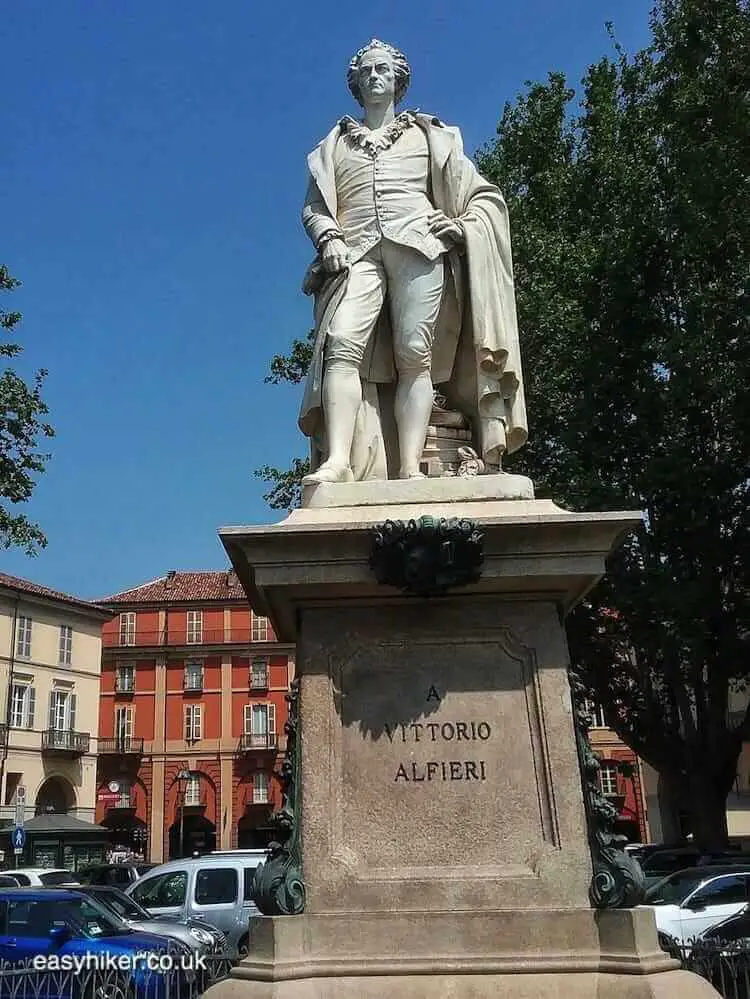
Alfieri is considered the “father of Italian tragedy”, but is in fact another one of those writers whose lives were more interesting than their works.
In his lifetime, the aristocratic Alfieri was infamous for the way in which he conducted his love affairs, which was scandalous and indiscreet even by the standards of 18th century Italy (Alfieri was a contemporary of Giacomo Casanova).
Alfieri concentrated his romantic efforts on married women from the high aristocracy, the higher the better, and his conquests included the Countess of Albany, the wife of the Scottish pretender Bonnie Prince Charlie whom Alfieri may or may not have secretly married. (The Countess, that is, not the Prince. Alfieri was not that scandalous.)
But this is just the beginning: Alfieri’s biography includes a fatal duel, a grotesque suicide attempt (he had himself bled by a doctor and then tore off the bandages) and hasty escapes from nearly all European capitals with cuckolded husbands in hot pursuit, all of that while he was a consecrated bishop of the Catholic Church. Beat that, Lord Byron!
And here is another reason to visit and discover Asti beyond Spumante: a stroll through the town’s streets can help you to understand the soul of Italian townscapes better than an exploration of more famous and glamorous cities such as Rome or Florence.
Here, flamboyant and monumental masterpieces are less likely to distract your attention and blunt your perception, which is why Asti so clearly reveals the essentially dramatic structure of the Italian town and the central role of the city square, the piazza.
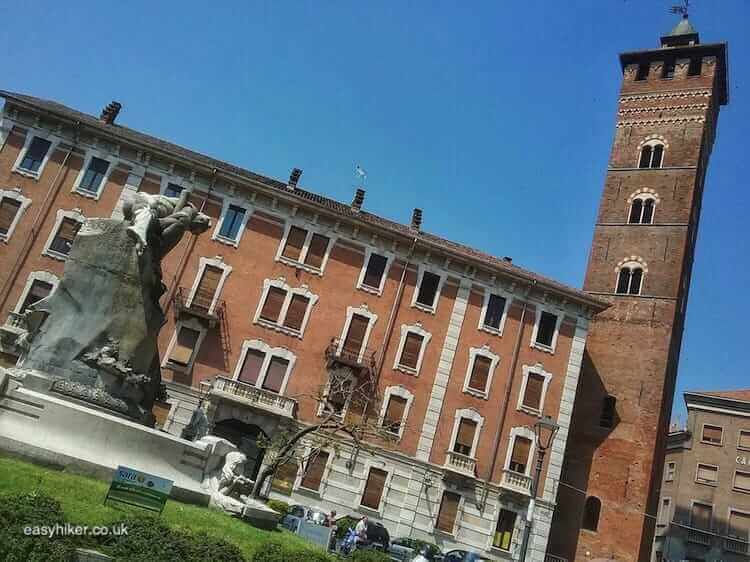
The piazza is the central element of all Italian townscapes. Anglo-Saxon architectural culture has developed around the individual building (helter-skelter: which is why London’s skyline looks so cluttered and confused), while French cities are shaped by boulevards, their gentle flow and episodic structure.
Italian cities, conversely, are carefully composed for maximum dramatic effect: while the side streets do all the hard work, providing places for accommodation and trade, it is on the piazza where all the exciting action takes place.
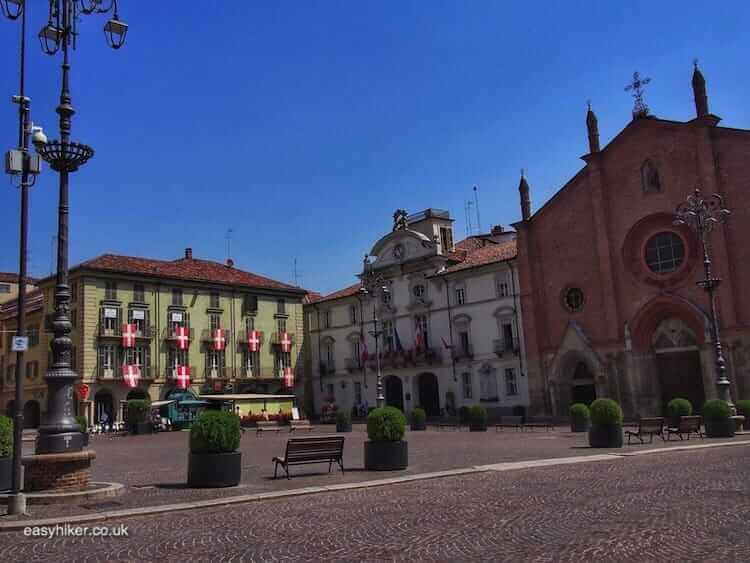
One could also say: the streets work like the recitativo of musical theatre, doing all the hard work in the narration, while the piazzas function like arias. It is here where all the dramatic tension is created, built up and eventually relieved.
The piazza is where all the fun takes place. If it is true, as they say, that all art constantly aspires to the conditions of music, in Italy everything aspires to become an opera.
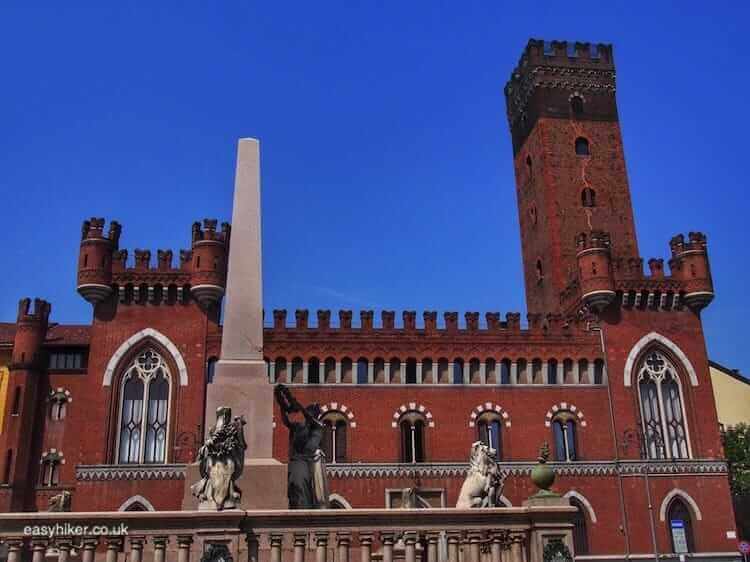
After your stroll, we recommend that you catch your breath in the Parco della Resistenza (in view of the train station, which is why this is also a great place to kill time before the arrival of your train), overseen by King Vittorio Emmanuelle in his most eccentric Carmen Miranda hat.
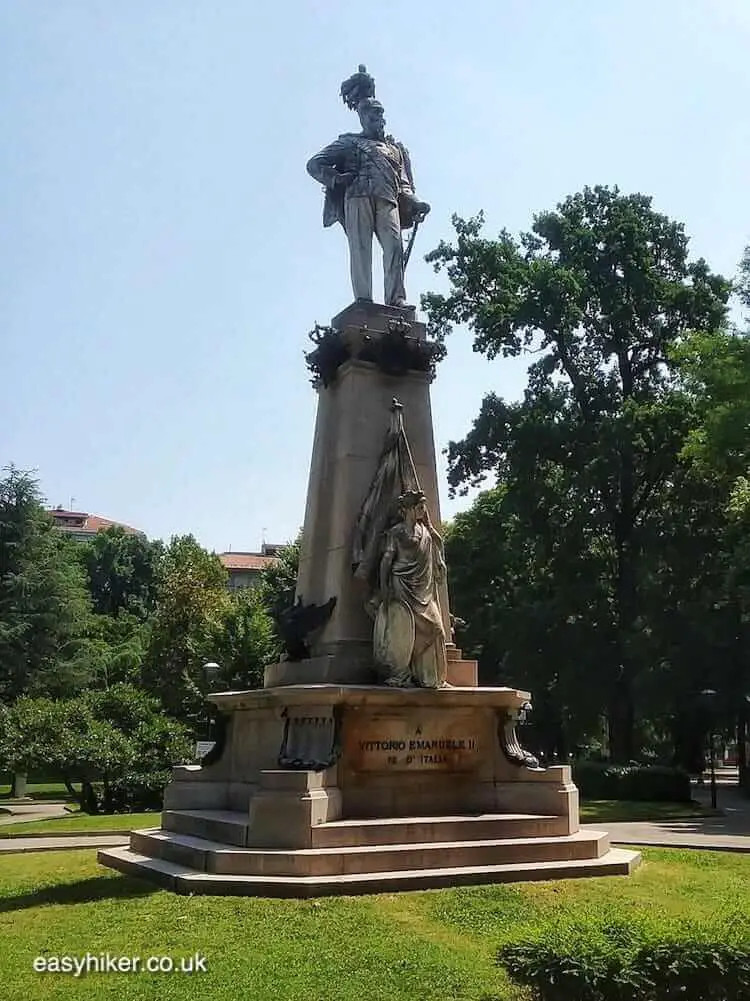
We also recommend that, with your evening meal, you choose a wine from the region, from Asti or the near-by Alba. We picked one that was red, light and, yes, a little spumante (fizzy), but not as cloyingly sweet as the stuff that’s made Asti famous.

